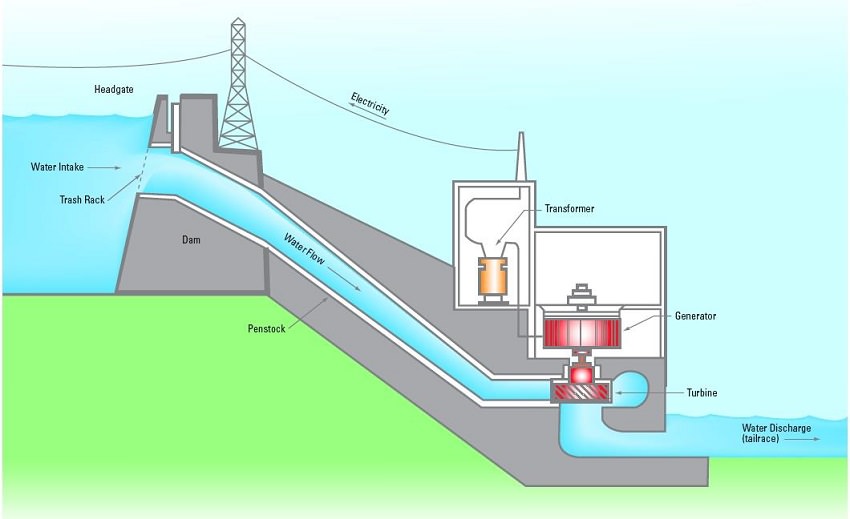Renewable Energy
Today, the change in climate and diminishing and dwindling fossil fuels are major concerns worldwide and across the globe. Hence, Malaysia which had launched a tariff system in April 2011 under Sustainable Energy Development Authority (SEDA), has spurred the development of renewable energy technologies including biomass, bio-gas, mini hydro and solar. Already in an equatorial location superb for solar, Malaysia has extensive tropical forests which can supply large masses of biomass. Hydropower already plays a significant part of the nation’s energy mix, particularly on the island of Borneo, and mini-hydropower from streams and rivers has boosted electricity supply in rural areas and is referred to as “ROR”, Run-of the River Scheme up to 30 MW in capacity.
In Sabah, there are five biomass power generation plants processing the EFB (Empty Fruit Bunch of Palm Oil) and out of five, only three sell electricity to the Sabah State Electricity Board (SESB) under the Renewable Energy Power Production Agreement (REPPA). HRE Kina Biopower Sdn. Bhd. and HRE Seguntor Bioenergy Sdn. Bhd. will be among the three. The new REPPA is usually for a tenure of 21 years from date of commissioning.
Under the parent company Hualang Renewable Energy Sdn. Bhd., hopes to venture into minihydropower in Borneo via Jaya Kuasa Bhd’s other subsidiary Transborneo Energy Sdn. Bhd.
Biomass
Biomass is defined as non-fossilised and originating from indigenous plants, animals and microorganisms including but not limited to biodegradable products also its residues and waste from agriculture industrial and municipal wastes originating from Malaysia.
Electrical power can be generated by burning biomass and as it burns it captures carbon dioxide out of the air, so that the net contribution of the cycle to global atmospheric carbon dioxide levels is zero.
SOURCE OF BIOMASS
- Wood and waste wood
- Leaves of the plants
- Agricultural waste, such as Empty Fruit Bunch of Palm Oil fruit
- Municipal solid waste (Urban Solid Waste) such as household waste
BIOMASS CONVERSION TECHNOLOGIES
Biomass power technologies convert renewable biomass fuels to heat and electricity. At present, the primary approach for generating electricity from biomass is combustion directfiring. The biomass fuel (EFB in this case) is burned in a boiler to produce high-pressure steam. This steam is introduced into a steam turbine, where it flows over a series of turning blades, causing the turbine to rotate. The turbine is connected to an electric generator. The steam flows over and turns the turbine. The electric generator rotates, producing electricity and through a transformer, it is transported to the connecting National grid.
OPERATION CYCLE & STRATEGY

Mini / Micro Hydro Power Plant
Small hydro is the development of hydroelectric power on a scale serving either a small community or an industrial plant and the generating capacity is generally between 1- 50 Megawatts (MW).s the production of electricity by harnessing the power of flowing water from lakes, rivers and streams. Moving water turns a turbine, the turbine spins a generator, and electricity is produced and via transformer which is connected to the Grids.
Small hydro can be further subdivided into mini hydro, defined as 100 to 1,000 kilowatts (kW) and micro hydro which is 5 to 100kW. Micro hydro is usually the application of hydroelectric power sized for smaller communities, single families or small enterprise/companies.
Small hydro plants may be connected to conventional electrical distribution networks as a source of low cost renewable energy.
In year 2004, Malaysia signed up to the Kyoto Protocol and, in year 2011, established the Sustainable Energy Development Authority of Malaysia (SEDA Malaysia), adopting a sophisticated system of Feed-in Tariffs and other incentives to help develop its renewable energy resources of which hydro power is one of them.

Biogas
Biogas is defined as a gas produced by the anaerobic digestion or fermentation of indigenous organic matter under anaerobic conditions including but not limited to manure sewage sludge municipal waste and biodegradable waste originating from Malaysia
Biogas technology refers to systems that are designed to turn organic waste products into usable energy. Biogas typically consists mainly of methane, carbon dioxide, nitrogen and hydrogen, which can be combusted. This energy release allows biogas to be used as a fuel in a gas engine to convert the energy in the gas into electricity and heat. Biogas is a renewable resource, so it qualifies for Feed-in Tariff.
A biogas plant can be fed with energy crops, such as sludge municipal solid waste and biodegradable wastes. During the process, an air-tight tank transforms biomass waste into methane producing renewable energy that can be used for generating electricity.


